
Every so often, your pulse needs a reason to race that doesn’t come from traffic jams, work stress, or endless notifications. You crave something bold—an experience that feels reckless at first glance but is secretly safer than your morning commute.
That’s the sweet spot this list hits. Heart-thumping, breathtaking, full-throttle adventures that feel like a brush with danger… minus the actual danger. Whether you’re chasing wind, waves, heights, or raw speed, these experiences bring all the thrill without the gamble.
If you’ve ever wondered what it’s like to step outside your comfort zone without signing a waiver with fate, start here.
1. Skydiving (Tandem Jumps with Certified Instructors)

Skydiving is often portrayed in movies as a wild gamble with gravity, but in reality—especially tandem skydiving with certified instructors—it’s remarkably safe. You’re strapped to a seasoned professional who has likely completed hundreds or even thousands of jumps. Modern parachutes come with automatic deployment systems that kick in if the instructor doesn’t act in time. The safety stats speak for themselves: the U.S. Parachute Association reports a fatality rate of just 0.39 per 100,000 jumps.
The sensation of falling isn’t quite what you’d expect—there’s no rollercoaster drop in your stomach. Instead, you feel a cushion of air pressing up at you, making it feel more like floating. And the view? Stunning. Expansive. Utterly unforgettable. From 13,000 feet up, the world looks calm, peaceful—even as your heart is hammering from the rush. But once the chute opens, you’re gliding serenely back to earth.
Quick Info:
- Best Months to Jump: April to October (weather dependent)
- Top Locations: Interlaken (Switzerland), Queenstown (New Zealand), Dubai (UAE), California/Nevada (USA)
- Minimum Age: Typically 18+
- Fitness Level Required: Moderate; no major health conditions
- Safety Tip: Always choose a USPA-certified drop zone or equivalent in your country
2. Bungee Jumping from Professional Platforms
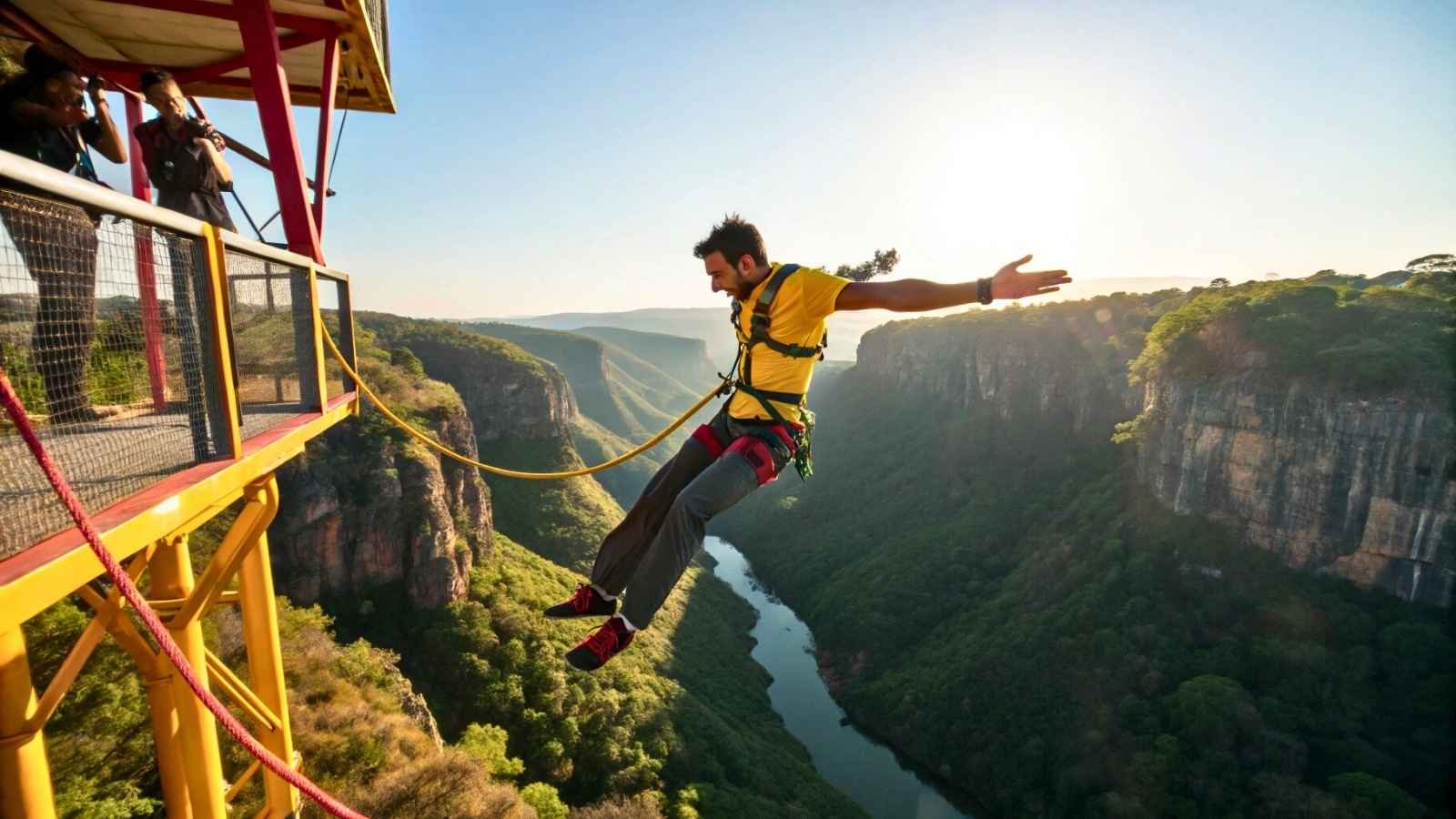
It may look reckless, but bungee jumping is one of the most regulated extreme sports in the world. Operators use industrial-grade cords and full-body harness systems tested beyond the forces your body will ever face. The risk? Minuscule when jumping with internationally accredited companies. You’re often safer tied to that cord than you are crossing a busy intersection.
There’s something primal about leaping off a ledge with nothing but a stretchy cord holding your fate. The second you leave solid ground, fear turns into pure adrenaline, and by the time you rebound back up, your brain is buzzing with a strange mix of terror, relief, and euphoria. And that’s exactly why people keep coming back.
It’s not about danger—it’s about controlled chaos. And in this case, the chaos is exquisitely engineered.
Quick Info:
- Best Months to Jump: Year-round in warm climates; May–September in colder regions
- Top Locations: Bloukrans Bridge (South Africa), Verzasca Dam (Switzerland), Queenstown (NZ), Colorado (USA)
- Minimum Age: 14–16 (varies); parental consent under 18
- Fitness Level Required: Low to moderate
- Safety Tip: Look for AJ Hackett or other recognized global operators
3. Paragliding with Licensed Pilots

Few experiences offer the sense of complete freedom that paragliding does. You’re suspended in a fabric wing, soaring silently above coastlines, valleys, and villages. The danger seems obvious—but statistically, tandem paragliding with certified pilots is less risky than driving a car on the freeway, especially in regions with strict licensing, weather assessment, and safety equipment requirements.
Pilots undergo serious training and testing, and flights are typically short, well-monitored, and only happen in ideal wind conditions. Most injuries occur when people go solo without proper training, not when flying tandem with an expert.
The thrill here isn’t in a sudden drop—it’s in that slow drift into skyborne serenity, where the world unfolds beneath you like a living map. If you’ve ever wanted to fly like a bird without jumping off anything, this is your moment.
Quick Info:
- Best Months to Fly: March to November (depending on region)
- Top Locations: Oludeniz (Turkey), Pokhara (Nepal), Annecy (France), Rio de Janeiro (Brazil)
- Minimum Age: Usually 14–16
- Fitness Level Required: Basic ability to jog 10–15 feet at takeoff
- Safety Tip: Always fly with certified tandem instructors and check wind conditions
4. Whitewater Rafting (Class III–IV Rapids)
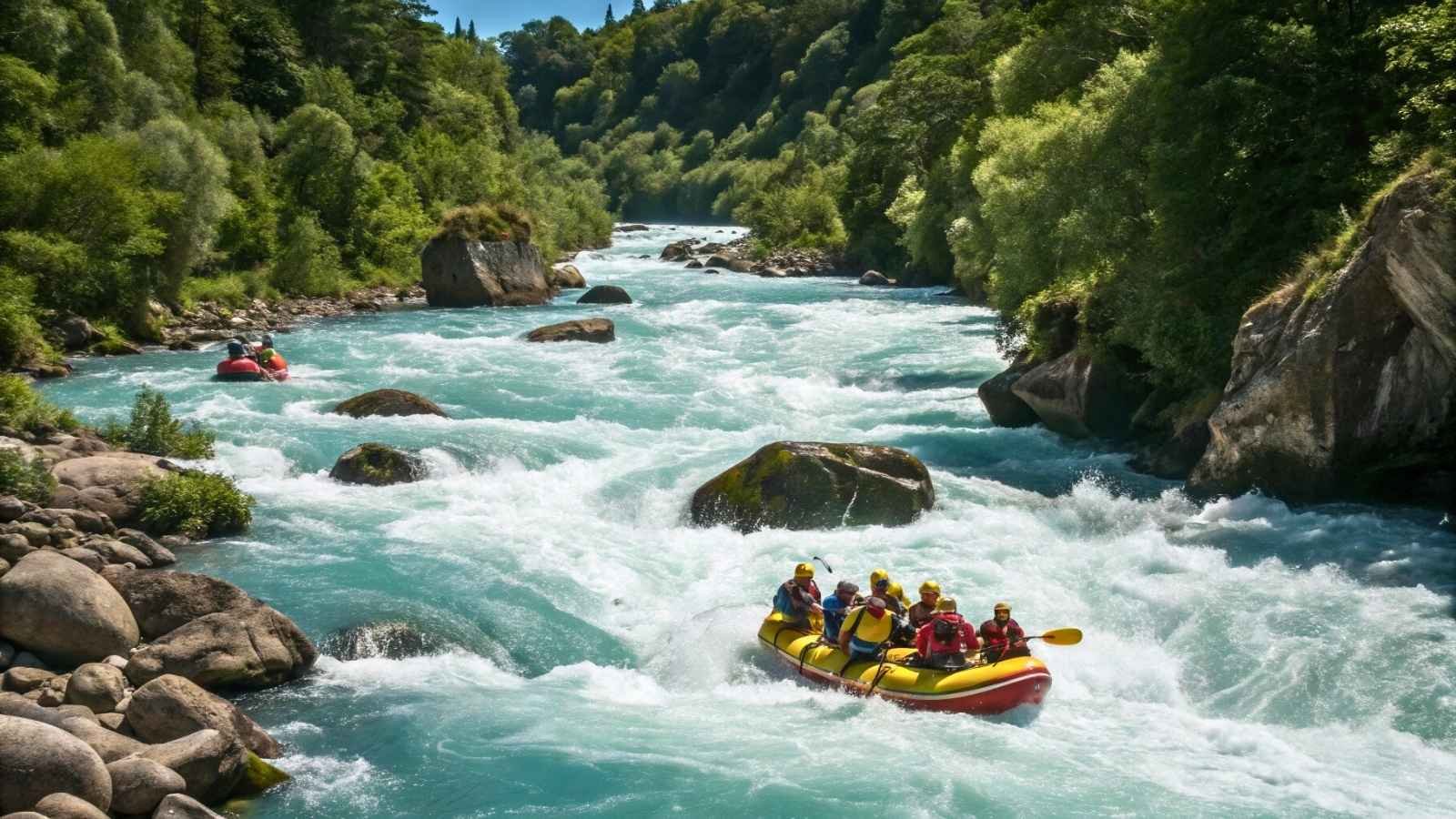
While whitewater rafting sounds dangerous—plunging into frothy torrents with nothing but a rubber raft—the truth is, commercial rafting trips are run with obsessive attention to safety. Guides are trained in swift water rescue, CPR, and emergency navigation. Life jackets, helmets, and briefing sessions are standard. The real risk comes from overconfidence, not the river itself.
Class III–IV rapids offer the perfect blend of thrill and control. There are moments when the raft seems almost vertical, but then it rights itself, and everyone’s paddling and laughing like it never happened. And between the wild stretches, there’s time to soak in jaw-dropping canyon views, waterfalls, and even wildlife sightings.
It’s one of those adventures that makes you feel like part of a team, with strangers becoming crewmates in minutes. You don’t need to be a pro swimmer—you need a sense of adventure and a dry pair of socks waiting at the end.
Quick Info:
- Best Months to Raft: May to September (peak snowmelt and river flow)
- Top Locations: Colorado River (USA), Zambezi River (Zambia), Futaleufú (Chile), Ganges (India)
- Minimum Age: 10–16, depending on river class
- Fitness Level Required: Moderate; good health recommended
- Safety Tip: Go with licensed outfitters; ask about rescue protocols and raft types
5. Ziplining in Certified Adventure Parks
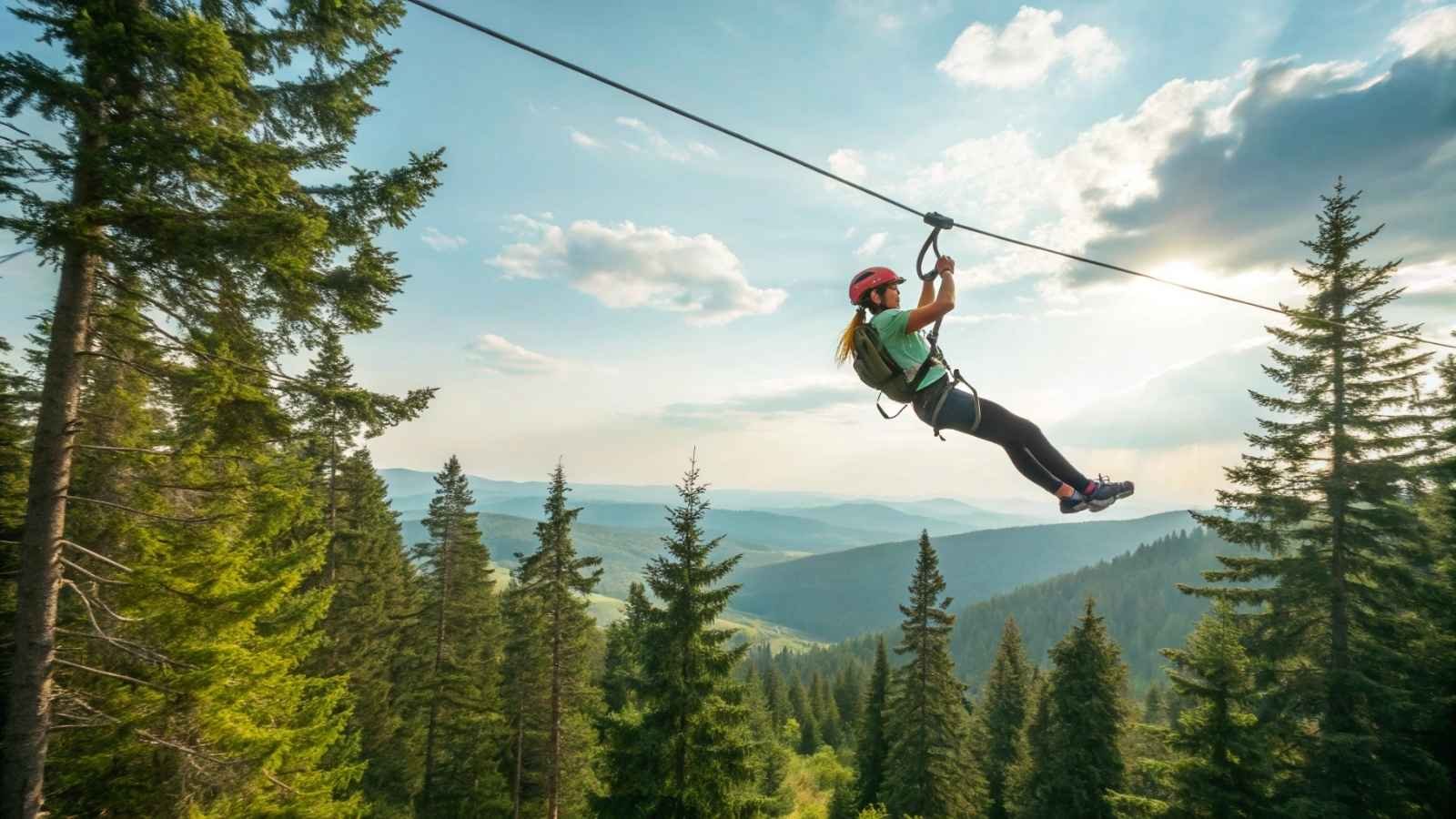
Ziplining offers that “wow” moment without the intense commitment of jumping or flying. It’s fast, it’s high, and yet it’s one of the safest adventure activities when run through professional parks. The systems are redundant (meaning if one part fails, another catches you), and staff are trained to ensure correct harnessing, braking, and landing techniques.
Soaring over canopies, rivers, or desert valleys at 40+ mph, there’s a rush that’s hard to describe. It’s not just the speed—it’s the sensation of gliding through space, arms outstretched, the wind in your ears. Great for first-timers or families who want something bold but not overwhelming.
It’s also wildly accessible—you don’t need to be an athlete, and there are ziplines built for almost every comfort level. Some even include treetop walks and rope bridges for the full adventure vibe.
Quick Info:
- Best Months to Zipline: Year-round in tropical locations; May–October in temperate zones
- Top Locations: Costa Rica (Monteverde), Whistler (Canada), Moab (USA), Chiang Mai (Thailand)
- Minimum Age: 6–10, depending on park rules
- Fitness Level Required: Low
- Safety Tip: Choose parks with ACCT certification or equivalent international safety standard
6. Hot Air Ballooning with Commercial Operators
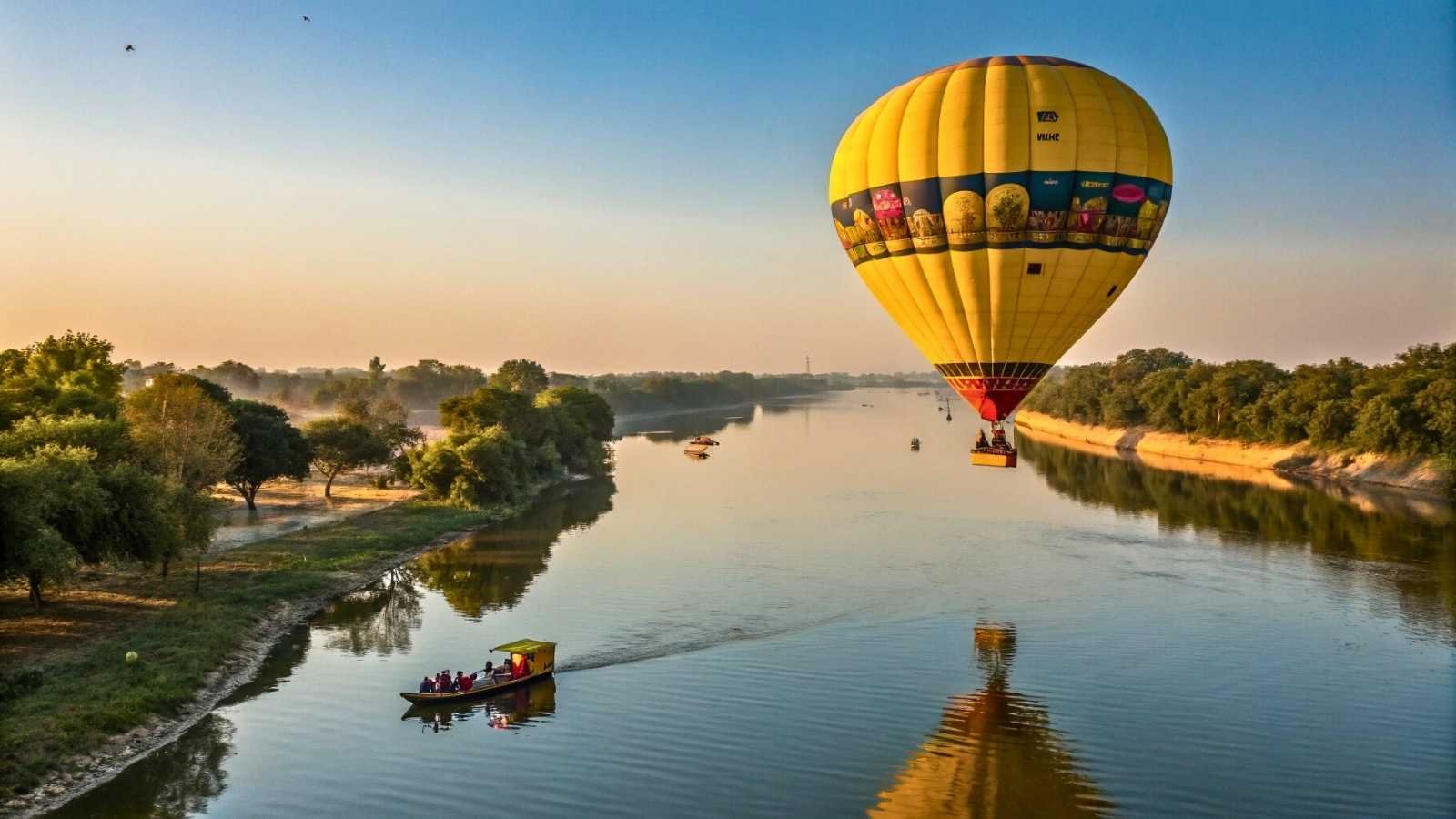
Drifting in a hot air balloon might look romantic and peaceful (which it is), but what many don’t realize is that it also delivers a subtle, mind-blowing kind of thrill, especially if you’re not super fond of heights. Standing in a basket thousands of feet above open fields, with no engine noise and just the occasional burst of flame above? It’s surreal. And surprisingly safe.
Balloon pilots are licensed through strict aviation authorities, and flights are only permitted in ideal weather conditions. Everything from wind speed to landing terrain is checked and double-checked. Most accidents happen when unlicensed or unregulated operators cut corners, not when you’re flying with a professional.
It’s not about speed or adrenaline—it’s about being suspended in silence, the world unfolding like a painting below. Even if you’re chasing a bit of fear, this one delivers it in a beautiful, meditative package.
Quick Info:
- Best Months to Fly: May to October (mornings for optimal calm conditions)
- Top Locations: Cappadocia (Turkey), Napa Valley (USA), Serengeti (Tanzania), Bagan (Myanmar)
- Minimum Age: Usually 6–8+
- Fitness Level Required: Minimal—must be able to stand unaided for ~1 hour
- Safety Tip: Book with CAA/FAA-certified operators and check the weather before scheduling
7. Indoor Skydiving (Vertical Wind Tunnel)

Want the skydiving experience without ever stepping in a plane? Enter indoor skydiving. You step into a massive vertical wind tunnel, suit up, and the airflow lifts you off your feet into a controlled, simulated free-fall. It’s 100% safe and perfect for all ages, making it a great gateway to the real thing—or a thrilling experience in its own right.
What’s great here is that you’re never actually in danger—you’re a few feet off the padded ground, guided by a trained instructor the entire time. It’s all about body positioning, air control, and feeling the wind roar around you. And yes, you’ll laugh at yourself trying to stabilize mid-air—but that’s part of the fun.
Ideal for those who want the adrenaline rush without the altitude, it’s also surprisingly addictive. First-timers usually want another round the moment they float down.
Quick Info:
- Best Months to Try: Year-round (it’s indoors!)
- Top Locations: iFLY (Global locations), Indoor Skydiving Bottrop (Germany), AirSpace (Belgium)
- Minimum Age: As low as 3 years in many centers
- Fitness Level Required: Low
- Safety Tip: Avoid large meals beforehand; wear fitted clothing and follow instructor cues closely
8. Via Ferrata (Protected Climbing Routes)
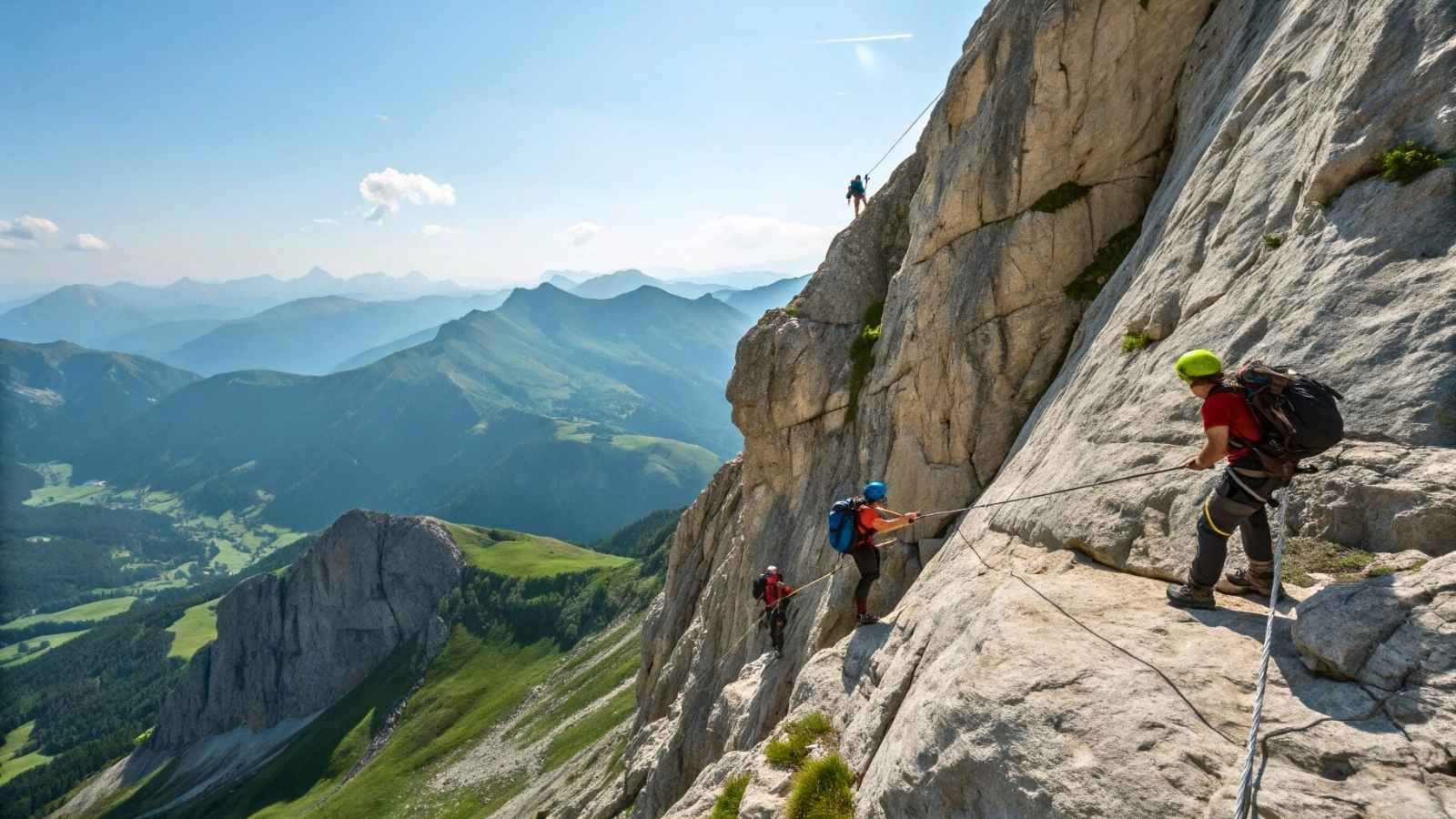
Via Ferrata—Italian for “Iron Path”—lets you scale cliffs and traverse ledges with the safety of a harness, a helmet, and permanently fixed cables and ladders. It’s essentially climbing for non-climbers, offering the feeling of exposure and height with the added reassurance of always being clipped in.
These routes are designed for scenic adventure, not extreme danger. You’ll cross steel suspension bridges, cling to iron rungs bolted into sheer rock, and inch along cliff faces that would otherwise be inaccessible. Yet thanks to the safety systems and route planning, you’re in far more control than it appears.
It’s a brilliant middle ground between hiking and climbing—ideal for those craving more intensity without needing elite gear or mountaineering skills.
Quick Info:
- Best Months to Climb: May to October (dependent on altitude)
- Top Locations: Dolomites (Italy), Telluride (Colorado, USA), Banff (Canada), Dachstein (Austria)
- Minimum Age: 10–12 (varies by route)
- Fitness Level Required: Moderate to high
- Safety Tip: Use certified Via Ferrata kits and always wear a helmet
9. Cage Diving with Sharks (Certified Operators Only)
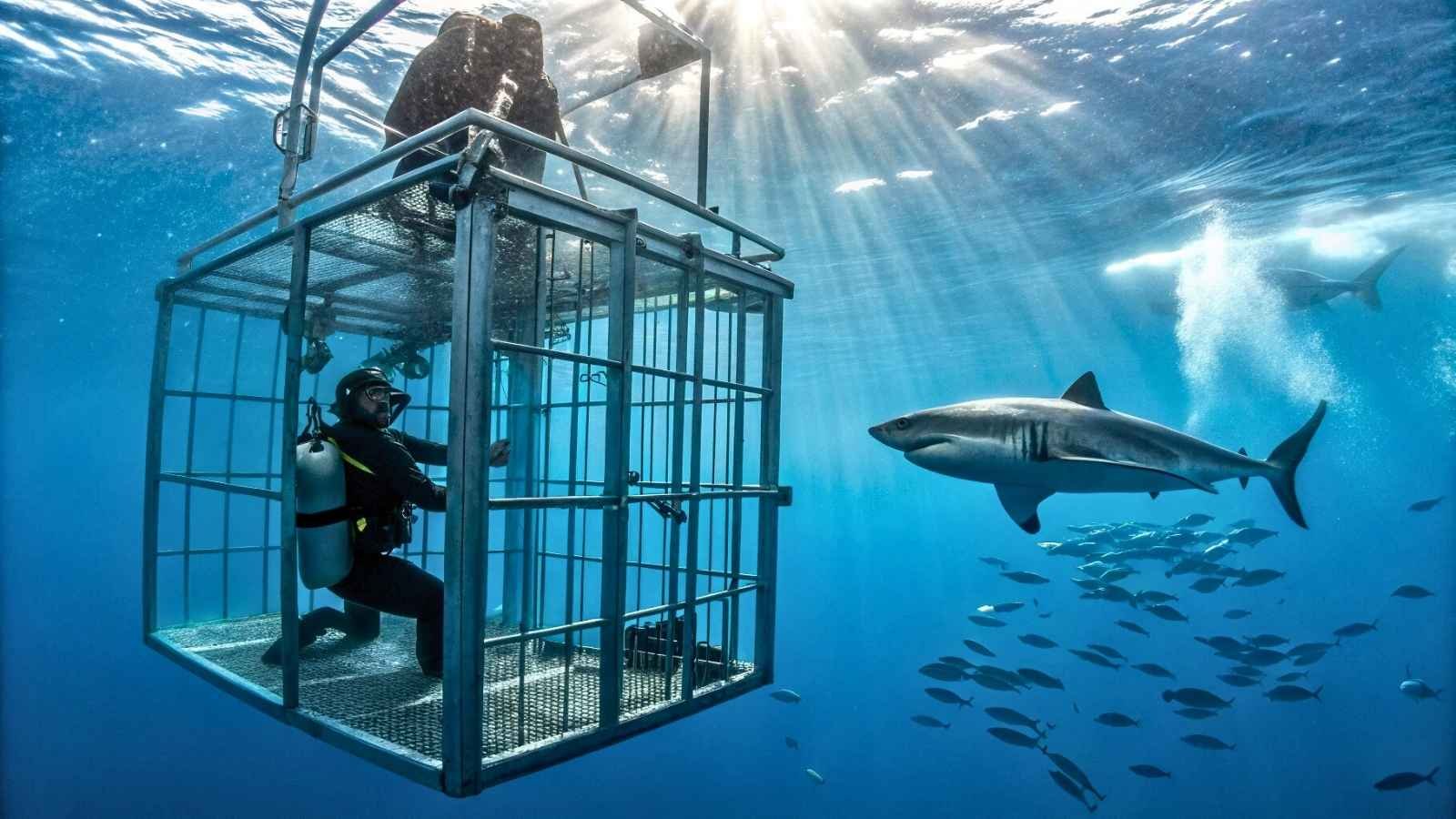
The idea of being face-to-face with a great white might seem like peak insanity—but here’s the truth: cage diving is far safer than it looks. When done with licensed operators using modern steel cages, regulated practices, and experienced dive teams, the risks are tightly controlled, and the experience is unforgettable.
You’ll either be in scuba gear or holding your breath in a surface cage while sharks glide by, sometimes just inches away. The moment your eyes meet theirs, you’ll feel a strange mix of primal fear and absolute awe. These creatures aren’t mindless killers—they’re majestic, graceful, and shockingly uninterested in humans.
This isn’t just a thrill—it’s a perspective shift. You leave with a new respect for the ocean, and yes, with an adrenaline spike you’ll be talking about for years.
Quick Info:
- Best Months to Dive: May to September (varies by region/species)
- Top Locations: Gansbaai (South Africa), Guadalupe Island (Mexico), Neptune Islands (Australia)
- Minimum Age: 10–16, depending on operator
- Fitness Level Required: Low to moderate (no diving license required for surface cages)
- Safety Tip: Choose ethical operators that don’t chum excessively or disrupt shark behavior
10. Scuba Diving with PADI-Certified Guides
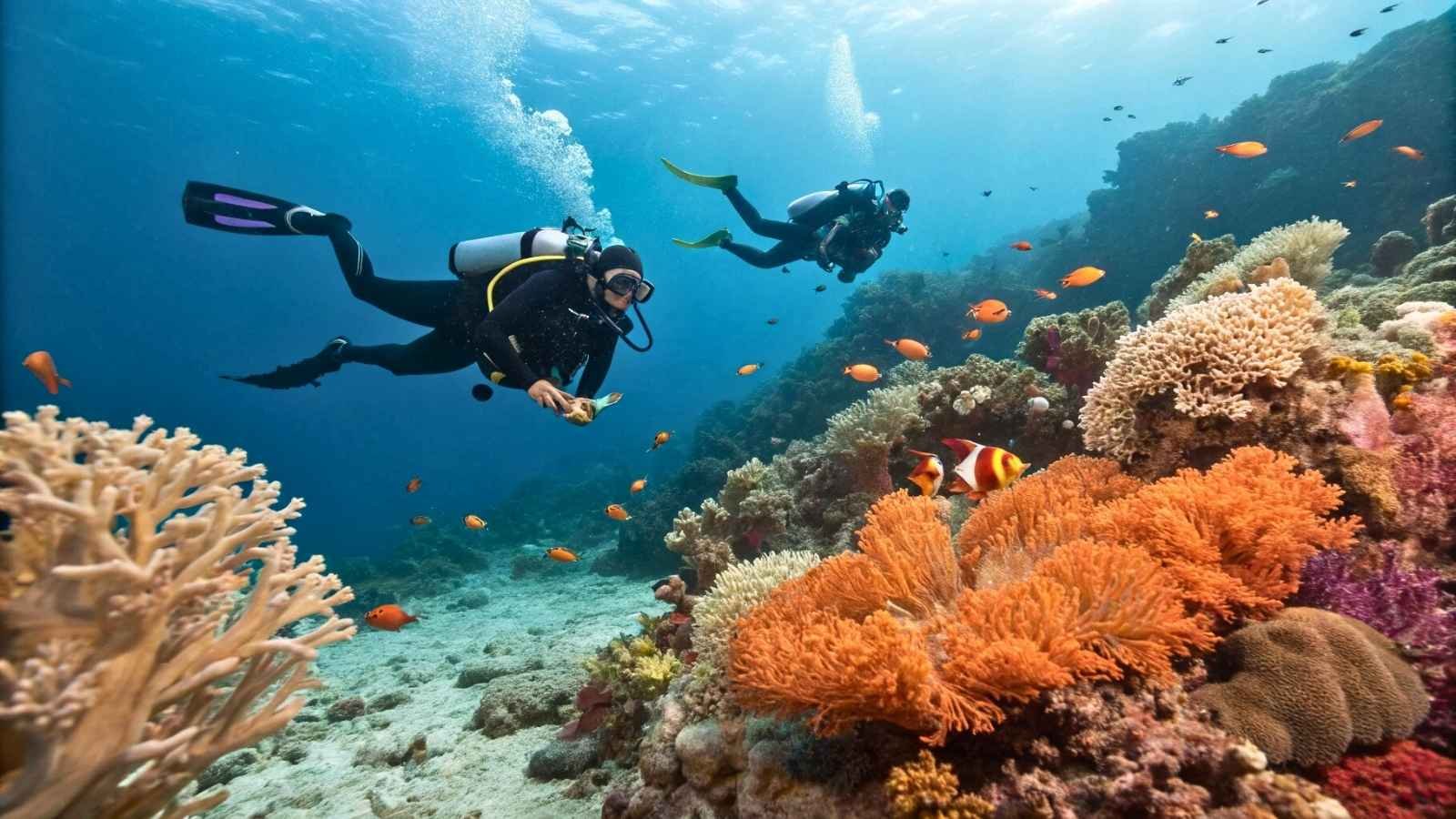
Scuba diving is one of those “quietly extreme” sports. You’re 60 feet below the surface, in a world that feels more alien than anything on land. And while it sounds risky, the reality is that scuba has a better safety record than many mainstream sports, as long as you dive with PADI-certified guides and follow basic safety rules.
Underwater, time slows down. You float effortlessly next to sea turtles, glide over coral reefs, and lose all sense of gravity. It’s meditative but thrilling—you’re exploring a world not built for you, but thanks to careful training and modern equipment, it feels surprisingly accessible.
The real joy of diving is in that balance of peace and pulse-quickening beauty. And the more you dive, the more you crave it—not just for the marine life, but for the rare chance to feel truly weightless.
Quick Info:
- Best Months to Dive: Year-round in tropical waters; best visibility often May–October
- Top Locations: Great Barrier Reef (Australia), Blue Hole (Belize), Maldives, Red Sea (Egypt)
- Minimum Age: 10+ for junior certifications
- Fitness Level Required: Moderate; must be able to swim and medically cleared
- Safety Tip: Always do a pre-dive safety check and never dive alone
11. Mountain Coaster Rides

This one’s for those who love rollercoasters but wish they came with a mountain view. Mountain coasters are gravity-powered rides that wind down forested slopes, through tunnels, and over drops, with you in control of the brakes. The thrill feels genuine—but the danger? Not so much.
These coasters are built low to the ground and locked on rails, with secure harnesses and automatic braking systems. It’s the kind of rush that makes your stomach do backflips, but the track does all the hard work. Whether you’re cruising or going full tilt, the experience is unforgettable.
Perfect for families or first-timers looking to dip their toes into adventure without facing a harness or helmet.
Quick Info:
- Best Months to Ride: Spring through fall; winter rides in some ski resorts
- Top Locations: Smoky Mountains (Tennessee), Swiss Alps (Toboggan Run), Colorado Rockies (USA), Austrian Alps
- Minimum Age: 3–10 (usually with an adult)
- Fitness Level Required: Very low
- Safety Tip: Follow speed limits—yes, even here!
12. Zorbing Downhill in Controlled Environments
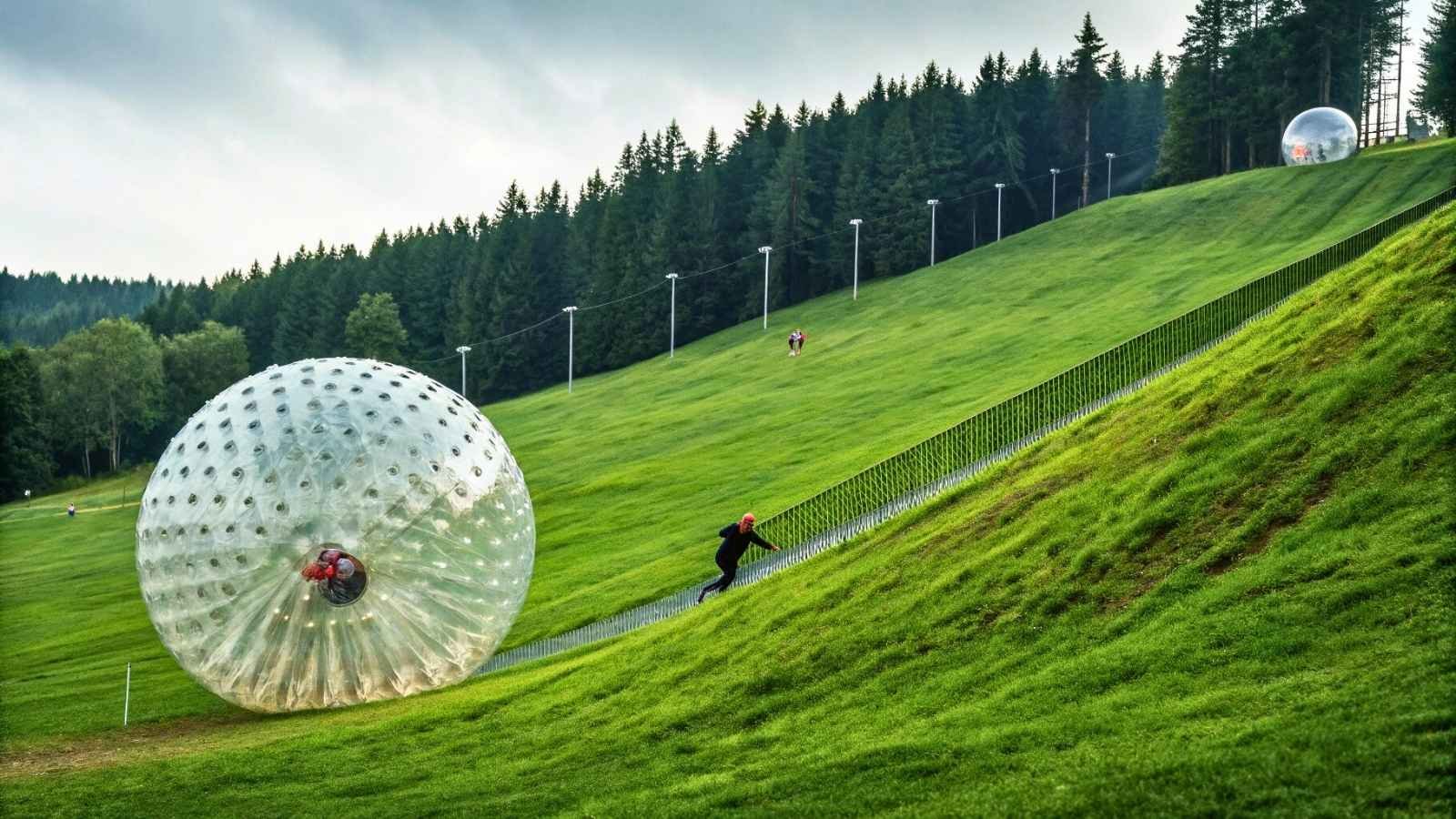
What do you get when you stick a human in a giant inflatable hamster ball and push it down a hill? Zorbing. And somehow, it’s as safe as it is ridiculous. You’re sealed inside a soft, double-layered orb, often with some water added to reduce friction, and then you tumble—laughing, spinning, bouncing—down a grassy hill.
It looks chaotic. It feels like controlled mayhem. But there’s padding in every direction, and the activity takes place on carefully cleared courses with soft grades and safety nets.
Zorbing is less of a sport and more of a joyous, absurd thrill, and sometimes that’s exactly what adventure needs to be.
Quick Info:
- Best Months to Zorb: Spring to early fall (dry grass or water zorbing)
- Top Locations: Rotorua (New Zealand), Pigeon Forge (USA), Goa (India)
- Minimum Age: 5–8+
- Fitness Level Required: Low
- Safety Tip: Eat light beforehand—you’ll thank us later.
13. Hang Gliding with Tandem Instructors
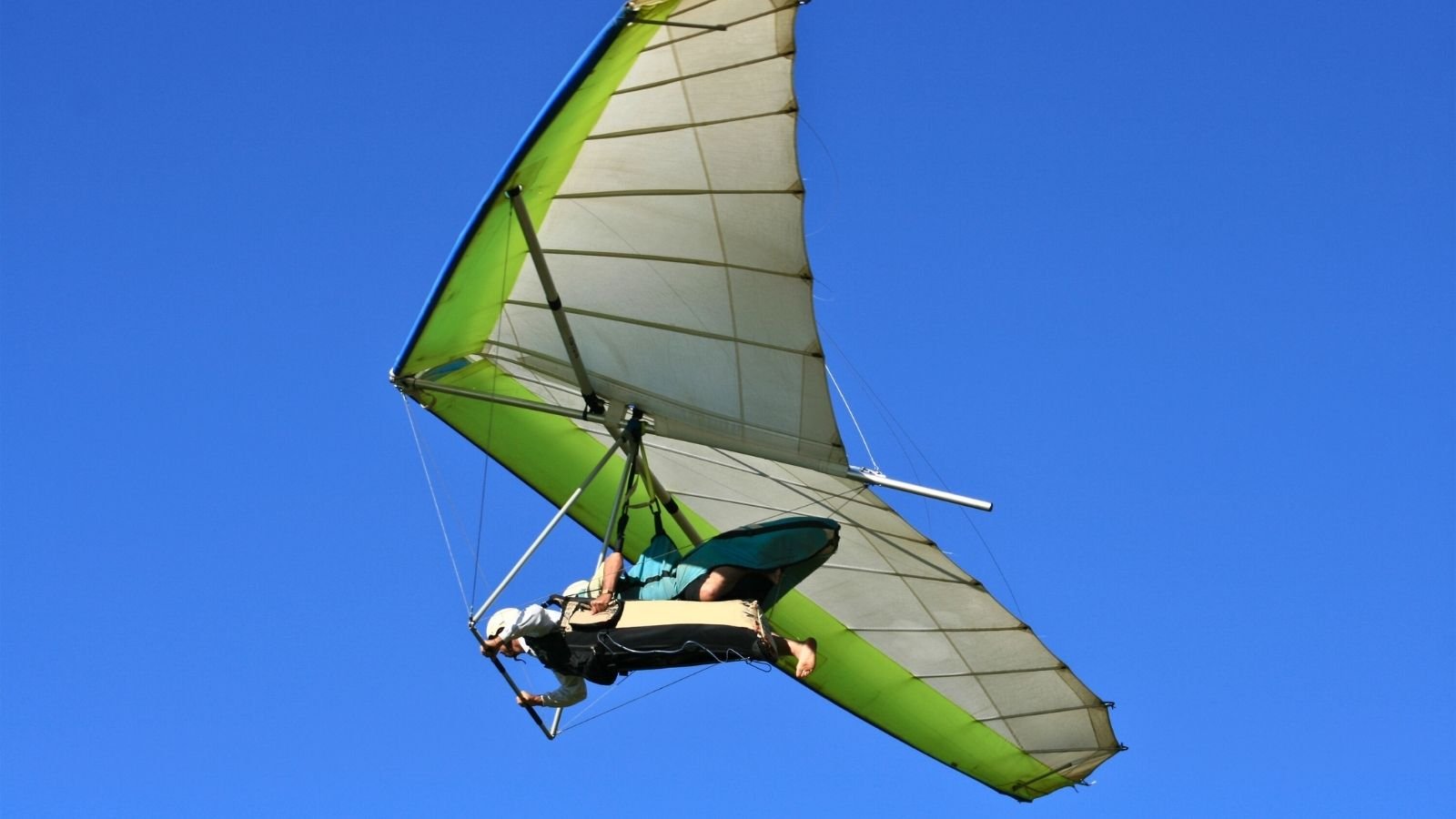
Hang gliding may look like skydiving’s riskier cousin, but when you’re flying tandem with a trained pilot, it’s a surprisingly smooth ride. You run a few steps off a slope or cliff, and suddenly, you’re soaring. No engine. No cockpit. Just you, your wings, and the wind.
Professional tandem setups come with dual control, parachute backups, and strict flight conditions. Pilots have logged hundreds of hours, and most schools operate only when wind and thermal patterns are ideal. It’s not reckless—it’s poetry on wings.
The moment when the glider catches a thermal and lifts higher into the sky? That’s pure magic.
Quick Info:
- Best Months to Fly: March to October (depending on location)
- Top Locations: Rio de Janeiro (Brazil), La Jolla (California), Alps (France/Switzerland), Hawaii
- Minimum Age: Typically 16+
- Fitness Level Required: Moderate—some jogging at takeoff
- Safety Tip: Check for certified flight schools and pilot licenses
14. Snowmobiling on Groomed Trails
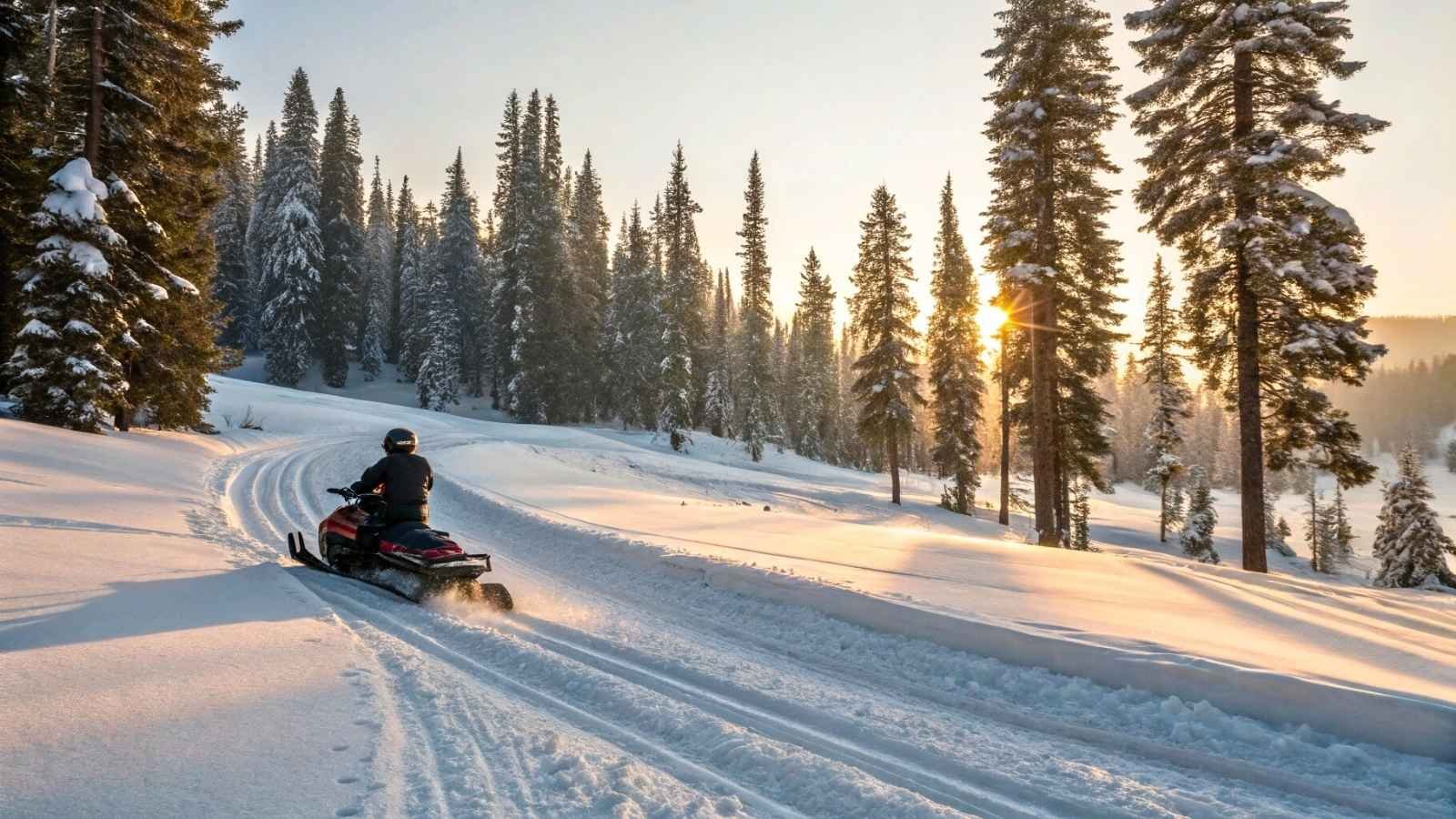
Think snowmobiling is dangerous? Not when you stick to groomed trails, marked routes, and responsible speeds. When done with a guide or through a rental outfitter, it’s safer than skiing in many cases, and just as exhilarating.
The fun lies in the combination of speed, terrain, and stunning winter landscapes. You can cruise past frozen lakes, through snowy forests, and over hills with just enough bounce to make it thrilling. Helmets and winter suits keep you protected, and modern snowmobiles come with speed limiters and stability control.
It’s like driving a sports car through Narnia—with fewer traffic lights.
Quick Info:
- Best Months to Ride: December to March (winter season)
- Top Locations: Yellowstone (USA), Lapland (Finland), Banff (Canada), Hokkaido (Japan)
- Minimum Age: 16–18 to drive; younger can ride as passengers
- Fitness Level Required: Moderate (arm strength for steering)
- Safety Tip: Stick to marked trails and watch for avalanche risk notices
15. Sandboarding on Desert Dunes
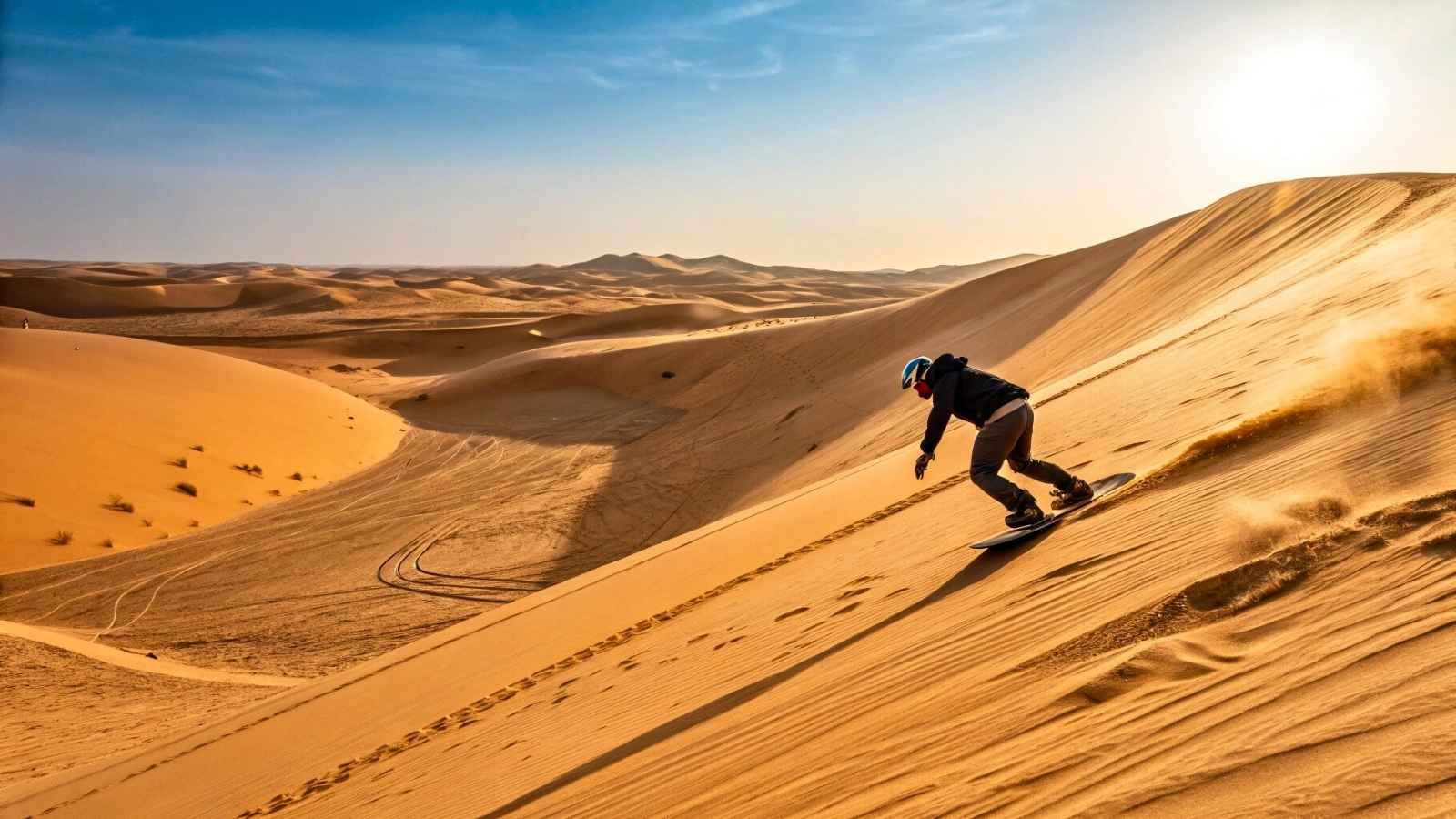
Swap snow for sand and you’ve got sandboarding—a wild ride down towering desert dunes on a board that glides like butter. It might look risky, but since you’re falling into soft, dry sand (not icy slopes), it’s low-impact and relatively safe.
You’ll hike to the top of a dune, strap in, and carve your way down. The speed is real, the wipeouts are harmless, and the views? Otherworldly. And unlike skiing, there are no trees or cliffs to crash into.
It’s accessible, wild fun—and your legs will be jelly by the end, but in the best way.
Quick Info:
- Best Months to Ride: October to March (avoid extreme desert heat)
- Top Locations: Huacachina (Peru), Dubai Desert (UAE), Swakopmund (Namibia), Great Sand Dunes (USA)
- Minimum Age: 8–10+
- Fitness Level Required: Moderate (climbing dunes is real cardio)
- Safety Tip: Wear goggles and protect your feet from hot sand
16. Ice Climbing with Professional Gear and Guides
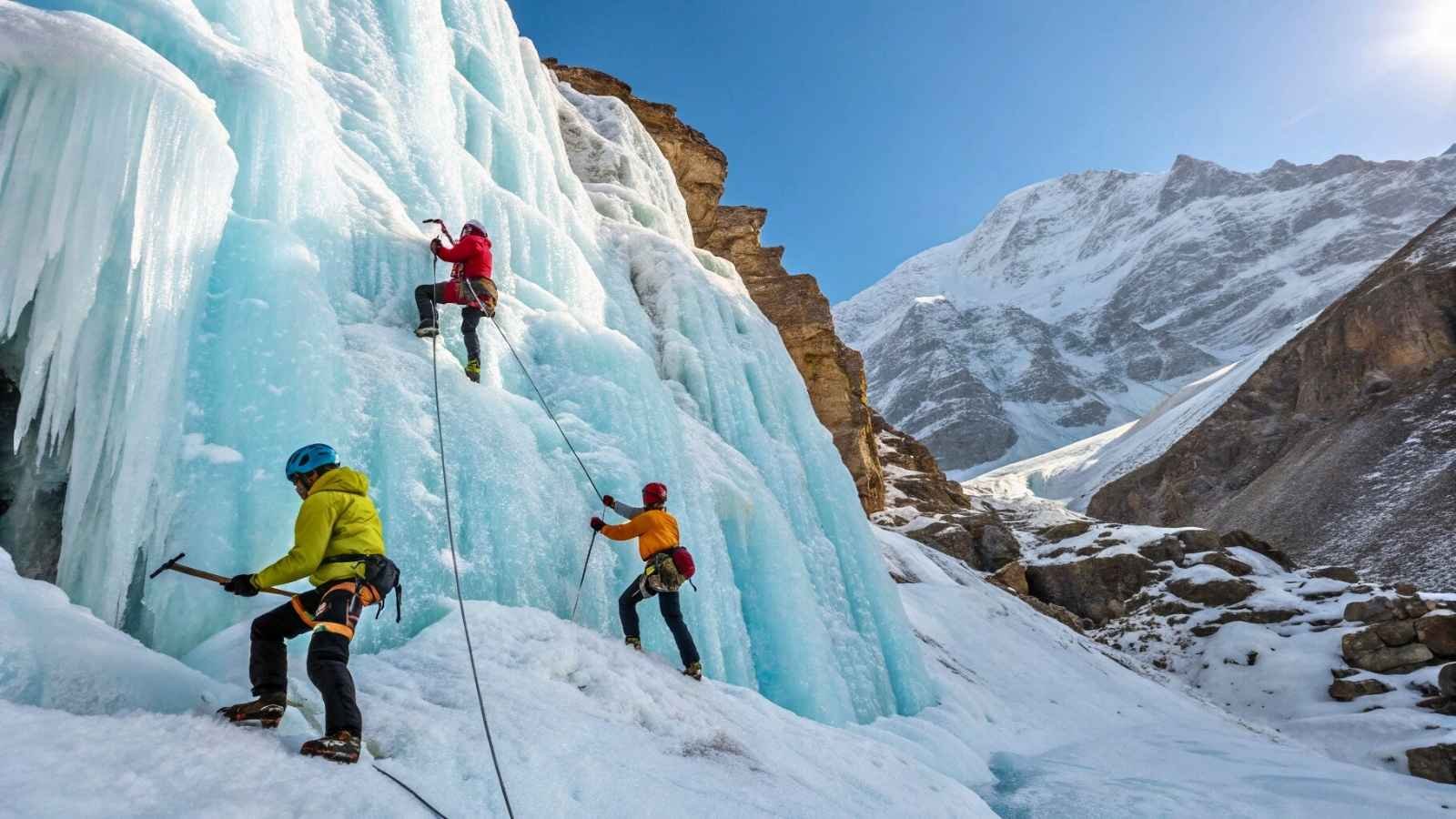
Yes, it’s climbing frozen waterfalls. But when you do it with certified guides, fitted crampons, ice axes, and ropes, ice climbing is not the death wish it seems—it’s an engineered thrill ride up frozen terrain. Think of it as vertical hiking… with spikes.
The sound of your axe thunking into the ice, the feel of your boots locking into place—it’s intensely physical but also calm, methodical, and focused. Falls are rare when properly belayed, and you’re harnessed from start to finish.
If you’ve done indoor climbing and want the next level, ice is your canvas.
Quick Info:
- Best Months to Climb: January to March (peak freeze)
- Top Locations: Ouray (Colorado), Rjukan (Norway), Chamonix (France), Alberta (Canada)
- Minimum Age: 14–16+
- Fitness Level Required: High (upper-body and core strength)
- Safety Tip: Go only with certified alpine guides
17. Jet Boating through River Canyons

Skimming across inches of water at 50 mph, zigzagging past canyon walls and doing 360° spins—all with a skilled captain at the helm. That’s jet boating: part thrill ride, part scenic tour. But here’s the twist—these boats are designed for this.
Unlike traditional boats, jet boats have no propellers. They use powerful water jets that let them navigate shallow, rapid-filled rivers safely. The experience feels wild but is meticulously rehearsed, with veteran pilots trained for every twist and turn.
It’s fast, wet, and filled with yells of joy—but not danger.
Quick Info:
- Best Months to Ride: Spring through early fall (water levels are ideal)
- Top Locations: Shotover River (NZ), Snake River (USA), Niagara Gorge (Canada), Tasmania (Australia)
- Minimum Age: 5–10+
- Fitness Level Required: Low
- Safety Tip: Sit tight, follow all onboard instructions—your driver knows what’s up
18. Wingsuit Flying (Under Expert Supervision and Conditions)
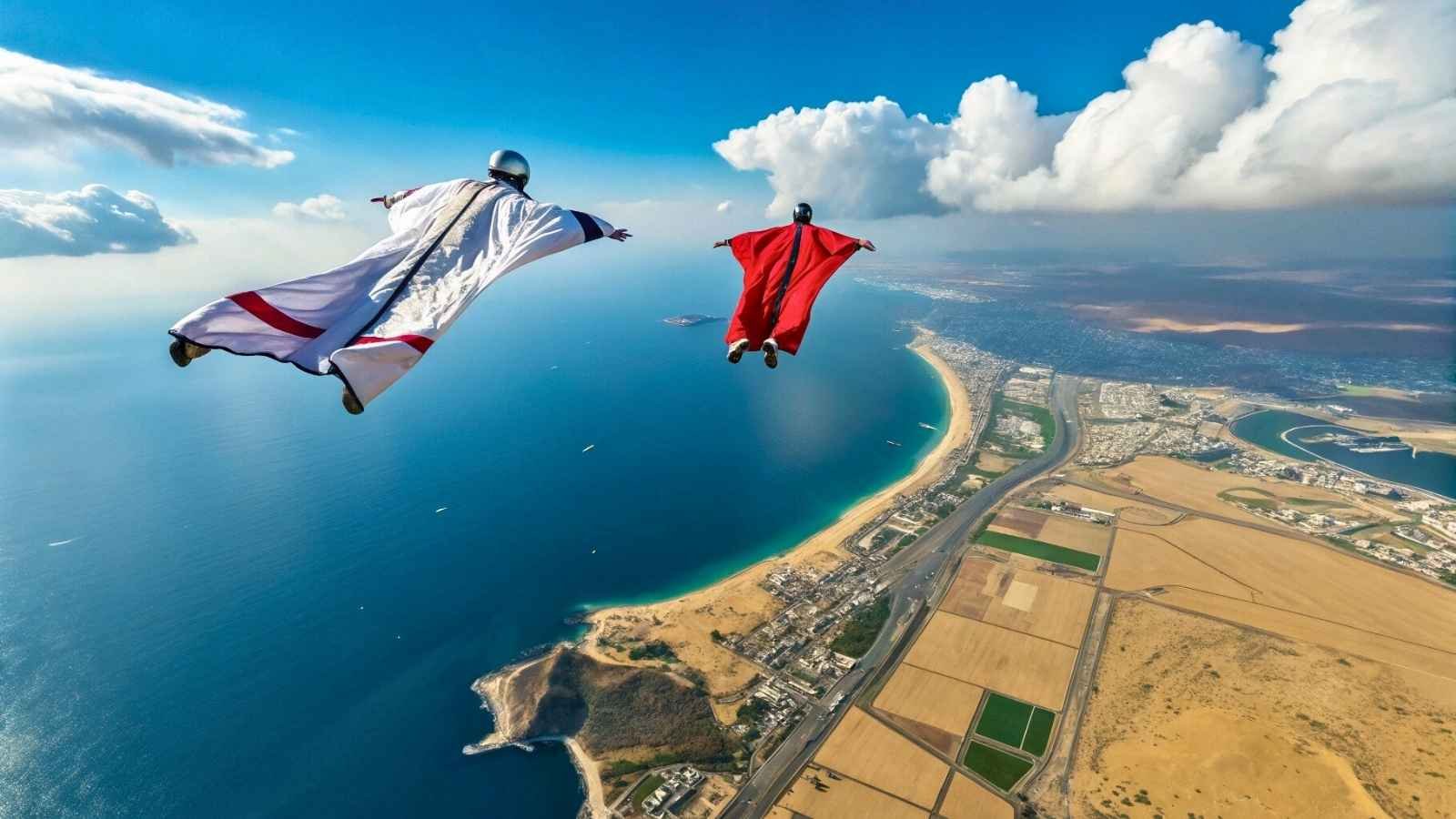
Wingsuit flying is often labeled “the most extreme sport in the world,” and that’s true, if you’re leaping from cliffs without experience. But under strict conditions—like wingsuit tandem flights, wind tunnel training, or advanced jumps after hundreds of skydives—it becomes an art form grounded in science and practice.
The feeling? You’re flying forward, not falling. Unlike skydiving, a wingsuit gives you lift, glide control, and up to 3 minutes of flight before deploying a parachute. Every move you make shifts your trajectory. It’s surreal.
While not for total beginners, this is the pinnacle of human flight—done with discipline, planning, and an obsessive commitment to safety.
Quick Info:
- Best Months to Fly: May to September (ideal flying weather)
- Top Locations: Lauterbrunnen (Switzerland), Moab (USA), Chamonix (France)
- Minimum Experience: 200+ skydives typically required
- Fitness Level Required: High (core control and mental focus)
- Safety Tip: Never attempt solo wingsuit flight without certified training and progression






